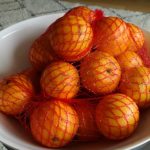New and less traditional players have entered the market since the mid-20th century. The majority of homes now have a microwave and specialty appliances, such as rice cookers and electric tea kettles. The majority of studies reviewed agree that specialty appliances such as rice cookers and electric kettles “consistently utilized less energy” than traditional alternatives.
The microwave showed trends that were less clear, but seems to emerge victorious for small portions and foods with short cook times. If you would simmer food on a stove during cooking then you probably should not cook it in a microwave.
Dry beans for example, can be cooked more efficiently on the stove. A single hamburger does better in the microwave, but four hamburgers can be cooked with less energy on the stove.
The conscientious chef can chop energy use in half versus someone with more careless practices using the same equipment. The simple practice of putting a lid on a pot during cooking can cut energy use by 8-fold.
Another best practice is to cook food in pots that are full to capacity. The efficiency of a pot is reduced by 80% if it is only filled a fifth of the way.
Cooking food in large batches takes advantage of the fact that boiling efficiency increases with pan size and volume of fluid. This article yielded good advice for reducing home energy consumption.
Given the general character of these findings it was shown that consumer education has the most potential to reduce energy demand in the kitchen. Increasing appliance efficiency and promoting alternatives to traditional cooking methods can also make a difference.



GIPHY App Key not set. Please check settings